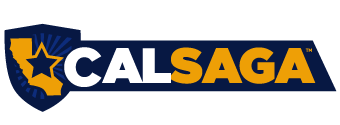STRATEGIES TO REDUCE THE RISK OF WORKPLACE VIOLENCE
Debbie Howlett, TrackTik, Network Partner
Since the start of the pandemic in March 2020, many previously low-risk workplaces are now at a higher risk for workplace violence. Many people frustrated by mask mandates, social distancing restrictions, and endless line-ups have resulted in a population with hair-trigger tempers. Some workplaces are recognized to be at significantly greater risk than others, like healthcare facilities. An emergency room in San Leandro, California, recently went into lockdown when a visitor, frustrated by Covid-19 restrictions, threatened to bring a gun into the hospital.
However, workplace violence in healthcare was already on the rise pre-pandemic. The U.S. Department of Labor Statistics reports that in 2019, 47% of emergency department physicians reported being physically assaulted during work, and 71% of nurses reported experiencing sexual harassment at the hands of patients. This year, according to the National Nurses Union (NNU), a recent nationwide survey of more than 5,000 registered nurses, 31% of hospital RNs said that they faced a small or significant increase in workplace violence, up from 22 percent since March 2021.
An unfortunate silver lining to the pandemic has allowed hospitals to review their safety protocols. Across the U.S., hospitals and other facilities have installed more security cameras and video surveillance, limited entry points to monitor visitors more closely, and hired additional security officers. They have also provided de-escalating training, equipped staff with Bluetooth-enabled panic buttons, and in some cases, brought in K9 patrols.
Security Officers at Risk
At present, the California Occupational Safety and Health Administration (Cal/OSHA) only has rules that regulate workplace violence in the healthcare industry. Still, there are no regulations covering workplace violence in other sectors. The Cal/OSHA Guidelines for Workplace Security have been in circulation since March 1995, so workplace violence has been a concern for a long time in California. The guidelines include specific factors that may put employers at a higher risk for violence, many of which are characteristic of the role security officers play in the workplace, such as:
- Lone workers
- Security officers transporting money between financial institutions
- Armed security officers at cannabis dispensaries and plants
- Safety ambassadors at healthcare facilities
- Public safety officers in communities and cities
- Public-facing security officers enforcing mask mandates and social distancing rules
Identifying Workplace Security Issues
Many workplaces are at risk for workplace violence, but specific workplaces are significantly more at risk than others. Therefore, every employer should perform an initial assessment to identify workplace security issues. The security assessment should begin with a physical tour of the workplace in question, a review of security procedures already in place to identify any potential vulnerabilities.
As you tour the workplace, consider the following ten questions:
- Where could someone easily access the building?
- Are potential entrances secured?
- Is there any form of access control upon entering the building? Is identification required?
- What is the procedure for visitors to the building?
- Have potential escape routes been explored in the event of a threat?
- Is the building a shared space? Do other tenants share your security concerns?
- Are there blind corners, hedges, or unlit areas where someone might hide?
- Are all the gates and fences surrounding the building secure with no gaps?
- Is the parking area well lit and maintained?
- Are doors left open and unlocked?
Crafting the Workplace Security Plan
Once the workplace tour is complete, create a workplace security plan using the information you collected. Unfortunately, there is no one-size-fits-all security plan that employers can download and implement. Every employer needs a plan tailored to its particular environment and takes company culture, physical layout, resources, and management styles into account.
Craft your security plan with the following suggestions in mind.
Secure your workplace – Consider using physical barriers likes fences and gates, access control systems, door locks, and video surveillance.
Create an access control plan – Use keys that cannot be replicated, electronic access cards, or a biometric option like fingerprint, palm print, or iris scanning. Provide badges for visitors.
Contract security officers – Hire security officers to perform foot or mobile patrols and checkpoint tours. Officers can also assist with visitor screening and monitoring access control systems.
Position security cameras where you need them – Security surveillance is key to monitoring who enters and exits the building at all times.
Provide good lighting – Make sure that employee entrances and exits are located in well-lit areas, and interiors, corridors, stairwells, and parking lots are illuminated.
Consider using alarms – Ensure that entrances and exits are equipped with alarm systems that warn employees if unauthorized individuals try to enter the building.
Create a map of the building – Identify entrances and exits, stairwells, doors, and security cameras. It will help you determine where to deploy extra security, video surveillance, and extra lighting.
Review and revise your security plan – The review should ensure that doors are closed or locked, the locks are working, and security officers properly screen visitors.
Redesigning aspects of your workplace can reduce the likelihood of violence and keep your security officers and the people and facilities or institutions they protect secure. Consider revisiting your security plan today with some of these suggestions.
 Debbie Howlett
Debbie Howlett
TrackTik
Debbie is an experienced writer with a demonstrated history of working in the security industry. She is based in Montreal, Canada, with TrackTik—a dynamic and cutting-edge tech company that sells cloud-based security workforce management software.
debbie.howlett@tracktik.com
Twitter: @TrackTik

 Tony Unfried, CEO of CSA360, holds a master’s degree in Public Affairs and Criminal Justice from Indiana University, where he graduated with honors. While enrolled in his master’s program, Tony worked for The TJX Companies, Inc., leading the region in loss prevention and moving the company toward technology use in Security. Tony went on to join the most significant security company in Indiana, managing more than 500 employees and 50 sites, including the Indiana Convention Center, Bankers Life Fieldhouse, and Ruoff Home Mortgage Music Center. Seeing a noticeable gap in technology use in the physical security sector, Tony created his first security software application, launched at the Super Bowl in 2012, and recognized twice for Excellence in Mobile Technology by Techpoint. Tony has also spoken on Tech in Physical Security on panels with ASIS and IAVM.
Tony Unfried, CEO of CSA360, holds a master’s degree in Public Affairs and Criminal Justice from Indiana University, where he graduated with honors. While enrolled in his master’s program, Tony worked for The TJX Companies, Inc., leading the region in loss prevention and moving the company toward technology use in Security. Tony went on to join the most significant security company in Indiana, managing more than 500 employees and 50 sites, including the Indiana Convention Center, Bankers Life Fieldhouse, and Ruoff Home Mortgage Music Center. Seeing a noticeable gap in technology use in the physical security sector, Tony created his first security software application, launched at the Super Bowl in 2012, and recognized twice for Excellence in Mobile Technology by Techpoint. Tony has also spoken on Tech in Physical Security on panels with ASIS and IAVM. Debbie is an experienced writer with a demonstrated history of working in the security industry. She is based in Montreal, Canada, with TrackTik—a dynamic and cutting-edge tech company that sells cloud-based security workforce management software.
Debbie is an experienced writer with a demonstrated history of working in the security industry. She is based in Montreal, Canada, with TrackTik—a dynamic and cutting-edge tech company that sells cloud-based security workforce management software. Shaun Kelly joined Tolman & Wiker Insurance Services in 2005. He specializes in all lines of property and casualty insurance for industries including contract security firms, agriculture, construction, oil and gas. Shaun received a BS in Business Administration with a major in Finance from California State University in Fresno, California. He is an active member of several industry associations, including the Association CALSAGA, the Kern County Builders Exchange and the Independent Insurance Agents of Kern County. Shaun can be reached at 661-616-4700 or
Shaun Kelly joined Tolman & Wiker Insurance Services in 2005. He specializes in all lines of property and casualty insurance for industries including contract security firms, agriculture, construction, oil and gas. Shaun received a BS in Business Administration with a major in Finance from California State University in Fresno, California. He is an active member of several industry associations, including the Association CALSAGA, the Kern County Builders Exchange and the Independent Insurance Agents of Kern County. Shaun can be reached at 661-616-4700 or  Jaimee K. Wellerstein is a Partner at Bradley & Gmelich LLP, and the Head of the firm’s Employment Department. Jaimee concentrates her practice in representing employers in all aspects of employment law, including defense of wage and hour class actions, PAGA claims, discrimination, retaliation, harassment, wrongful discharge, misclassification, and other employment related lawsuits. She also provides employment counseling and training in all of these areas.
Jaimee K. Wellerstein is a Partner at Bradley & Gmelich LLP, and the Head of the firm’s Employment Department. Jaimee concentrates her practice in representing employers in all aspects of employment law, including defense of wage and hour class actions, PAGA claims, discrimination, retaliation, harassment, wrongful discharge, misclassification, and other employment related lawsuits. She also provides employment counseling and training in all of these areas. Annette M. Barber is Special Counsel on Bradley & Gmelich LLP’s Employment Team. She represents clients providing employment advice and counsel in all aspects of hiring, performance management, training, compensation, and termination. Annette spent the past 17 years working with a global security company of 100,000 U.S. employees as an employment law attorney and then as Corporate Vice President directing HR Compliance nationwide for all 50 states, Puerto Rico and Guam.
Annette M. Barber is Special Counsel on Bradley & Gmelich LLP’s Employment Team. She represents clients providing employment advice and counsel in all aspects of hiring, performance management, training, compensation, and termination. Annette spent the past 17 years working with a global security company of 100,000 U.S. employees as an employment law attorney and then as Corporate Vice President directing HR Compliance nationwide for all 50 states, Puerto Rico and Guam. Named to IFSEC’s Global Influencers list 2018 for Security Thought Leadership, Mark is a business school graduate, CPP and Member of The Security Institute (MSyI). Mark’s background is in security services, corporate security, consulting and workforce software. A graduate of Concordia University in HR Management and International Business, he progressed to several senior management roles responsible for security business units across Canada, including serving as the Senior Manager for Corporate Security at Canada’s largest telecommunications company. He launched a consulting business focused on physical security for corporate clients, and has been teaching part-time at the Université de Montréal since 2016. Currently, Mark is the Vice-President, Security and Industry, in the software scaleup TrackTik, and volunteers as SRVP Region 6, Chair of the Security Services Council, the Private Security Officer Standard Technical Committee, and the Private Security Company (PSC.1) working group.
Named to IFSEC’s Global Influencers list 2018 for Security Thought Leadership, Mark is a business school graduate, CPP and Member of The Security Institute (MSyI). Mark’s background is in security services, corporate security, consulting and workforce software. A graduate of Concordia University in HR Management and International Business, he progressed to several senior management roles responsible for security business units across Canada, including serving as the Senior Manager for Corporate Security at Canada’s largest telecommunications company. He launched a consulting business focused on physical security for corporate clients, and has been teaching part-time at the Université de Montréal since 2016. Currently, Mark is the Vice-President, Security and Industry, in the software scaleup TrackTik, and volunteers as SRVP Region 6, Chair of the Security Services Council, the Private Security Officer Standard Technical Committee, and the Private Security Company (PSC.1) working group.